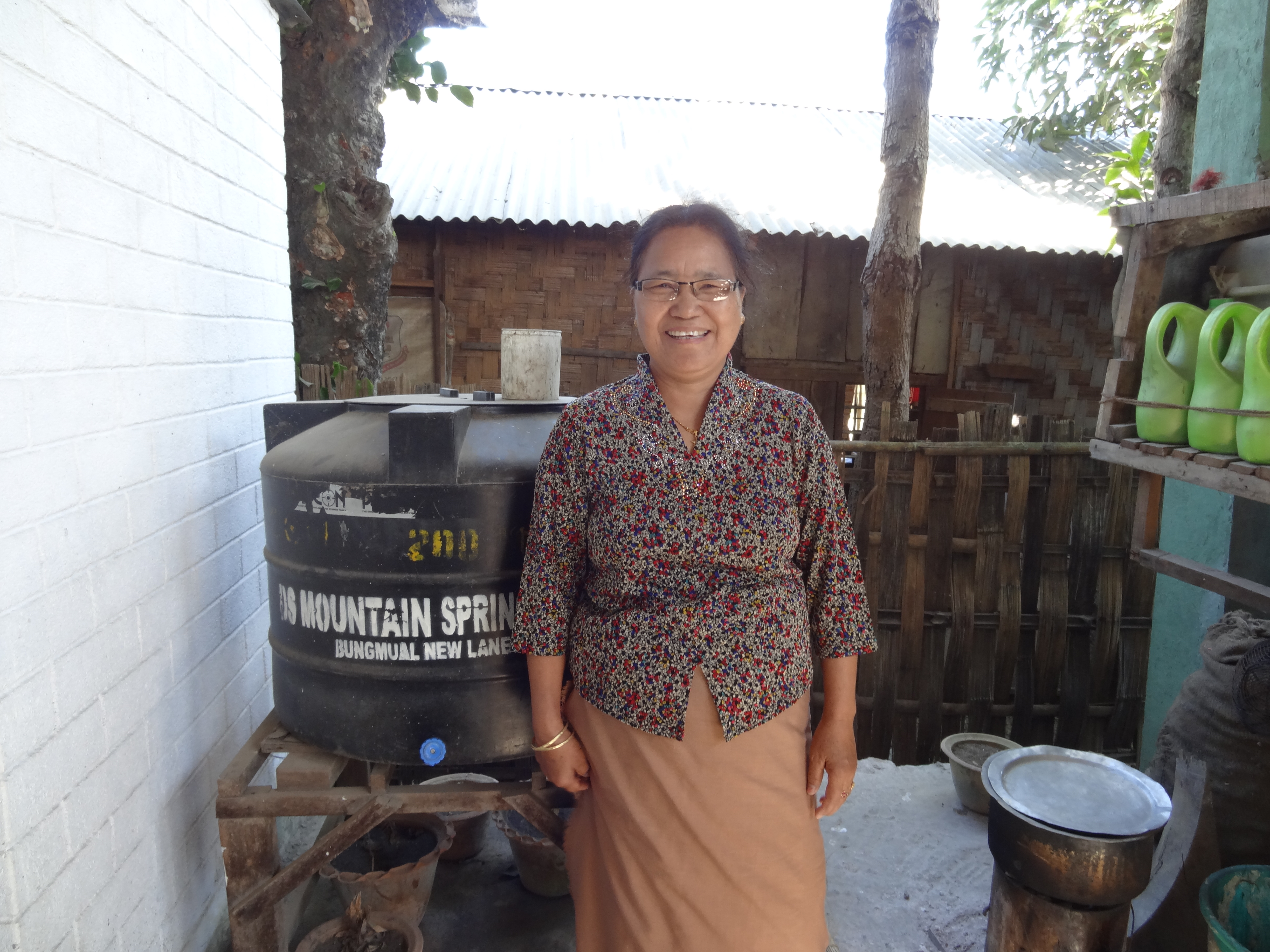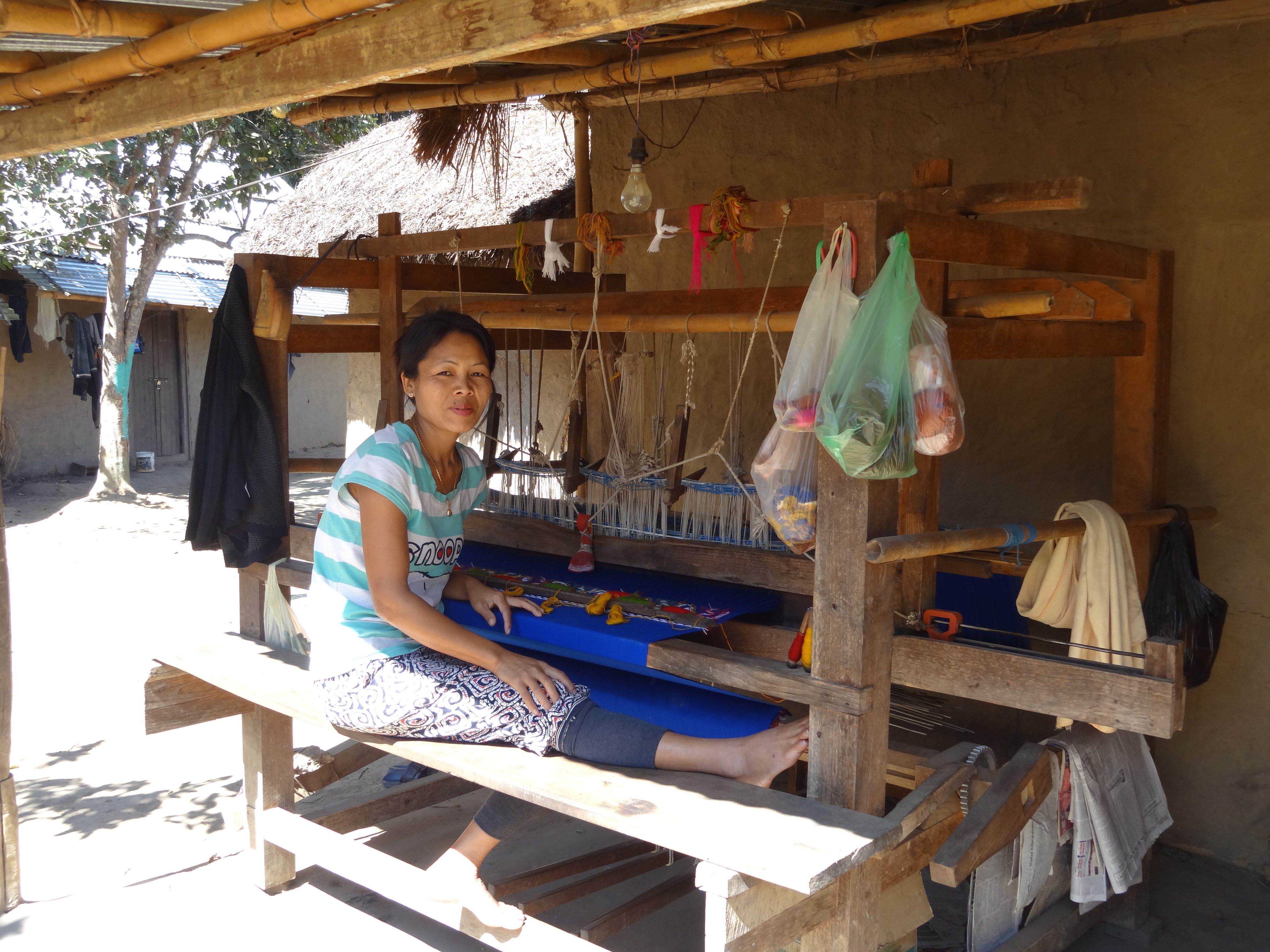The Microfinance Debate in India: Three Women Borrowers Who Put it in Perspective
February 27, 2013
Last week I had the privilege of visiting Churachandpur, the second-largest city in the state of Manipur. Three borrower groups from the surrounding area were cycling out; that is, three groups were making their final repayments to WSDS and I was there to collect journal information for Kiva for the first time in India. It was a truly exciting, heartwarming, and awakening day for me, because it was a chance to see what these women have really been able to accomplish over the course of their six month loans.
So much of what we read and hear about the successes of microfinance can seem like a biased picture painted for the sake of proving that a development solution has been reached. Having studied international development last year through my Master’s Degree program, I can tell you I’ve heard it all. Over the past twenty years, international development theorists and workers alike have advocated for a range of tactics, from women’s empowerment to international aid (or what some skeptics call “handouts”) to education to microfinance. It seems that just as soon as one tactic gains traction, another is proposed and then followed. People seem quick to toss aside one strategy to adopt the newest, afraid that their existing methods will be criticized for doing more harm than good. This attitude can be seen in many articles, and to give a taste I’ll suggest you take a peek at this, this and this.
India, specifically, went through what you might call a microcredit crisis, originating in the state of Andhra Pradesh. You may remember reading about the reported suicides of almost 100 borrowers who chose to take their own lives due to over-indebtedness during the year of 2010.
Since then, Indian MFIs have come under close scrutiny by the government, international development organizations, and microfinance institutions around the world. The government has implemented fairly strict guidelines for MFIs, regulating them separately from other banks. India’s microfinance sector is just now beginning to recover from this blow, and with the recent report that SKS Microfinance’s stock is finally making a profit, maybe it’s a sign that the government’s regulations are bringing more confidence into the industry again.
Within this framework, I set out to meet the first three Kiva borrower groups to cycle out and make their final repayment.
Whatever overarching themes and trends scholars and critics try to claim, examining results and consequences at a micro-level helps to assess impact when it comes to development practices. Maybe it is the case that when you look at microfinance as a whole, there’s no evidence for development in a certain country or sub-section of the economy. But what about how microfinance, foreign aid, NGOs, education reform, or any tactic can change just one person’s life? This may be where you can see the tangible evidence, not necessarily from a “big picture” perspective. With this in mind, I’d like to take the opportunity to introduce you to three of Kiva’s borrowers in Churachandpur. After I’m through, you can draw your own conclusions about what microfinance is (or is not) doing for women in India.
1. Thangkhawm
Our first stop on our visit was to see Zion Lom Group. All five members came together for their final repayments, and we spent some time chatting with them all about their lives and families. This group, purely by coincidence, is comprised of five women who are all widows. They all have children to take care of on their own, and they’ve all managed to repay their loans. We learned while we were there that they have a group savings account: in addition to the income they are making with their respective businesses, they’ve actually extended a loan to a sixth woman and have been charging her 5% interest. If these aren’t entrepreneurial minds, I don’t know what would be.
The matron of the home we visited for the collection was a woman named Thangkhawm. I use the word “matron” pointedly, as this is so clearly the home that she has built. She houses and provides for 10 family members, including her children, their respective spouses, and all her grandchildren. Typically this responsibility would be shared between grandfather and grandmother, but as I mentioned above, Thangkhawm is a widow. This woman is unlike any I have met; in her late 50s, she is beginning her fourth business of selling drinking water. I ask her what other businesses she has, and so we begin our tour of her home.
Thangkhawm’s initial endeavor was buying and selling rice husks that people use for animal feed. She would buy it in bulk from a supplier at a discounted rate, and surrounding villagers would come buy from her.
That business went so well that she decided to expand; because she was already buying animal feed, she naturally decided she would rear pigs. This way, if she had surplus rice husk that she wasn’t able to sell, she could use it for her own pigs. Once they are fully-grown, she sells the pigs to local butchers.
That business went so well that she decided once again to try her hand at another business. This time, she began buying sugar and powdered milk in bulk at discount prices and selling to neighbors and friends. She found her client base that came for rice husks or pigs often needed these staple items, so it was always an easy sell.
Finally, from a friend she learned of the mineral water business. It turns out one can purchase a 200 liter water tank, sell it, and make a profit of Rs. 1 per liter.
 Thangkhawm and the mineral water she sells by the liter
Thangkhawm and the mineral water she sells by the liter Thangkhawm coolly and calmly explains each business to us, as though it’s the most natural thing that she should single-handedly be providing for 10 other residents in her home. In her, a sense of duty to her family is surpassed by sheer love and joy. Rather than performing chores and taxing duties, she seems to be enjoyably passing time. I think you can sense this sentiment from her smiles.
2. Hevei
Our next stop was in another village to visit Nunthem Lom Group, whose members were also meeting to make their final loan repayments. While the loan officer was interviewing the featured borrower, I took some time to speak with another group member named Hevei. I was drawn to her for her broad smile and jovial nature. It seemed she was making jokes about every step of our journaling process and was in great spirits, asking to take my photo and playing with my blonde hair.
I asked Hevei about her business. She is a seamstress, and in addition to making clothing, she uses her sewing machines (which she purchased with her Kiva loan) for embroidery. I asked how long she has known how to sew and whether she is married. She seems about my age so I figure we might be able to identify with one another regarding work and relationships.
… I was wrong. Hevei has been working since she was 12. Her father passed away unexpectedly, so she left school to stay at home with her mother. Between herself and her mother, they were able to support her older sister through her schooling, as well as her younger brother, in addition to keeping up the household. While her older sister is now married with children of her own, Hevei remains single and living with her mother. Her income goes toward her brother’s university education in Delhi and she and her mother live off her mother’s meager income selling papayas.
I shake off the astonishment from this information and within a few minutes am able to continue our conversation. Instead of telling me much more, she invites us all to her home which is just a few houses away. There, we got a chance to see her sewing machines and what she has really been up to. Her sewing room is littered with fabrics of all colors, and a stack of school uniforms in the making. It turns out a private school near to her village heard about her skills and requested she make all the uniforms for the school this year. For the first time, Hevei has a stable, guaranteed income as a result of this “contract.”
We finished up our visit by snacking on some papaya grown in their yard and went on our way.
3. Lamneng
The last borrower I’d like to tell you about today is actually the featured borrower of Hevei’s group, Lamneng.
Lamneng lives in a complex with several buildings, small gardens, and a woodworking business. She was shy to welcome us and very soft-spoken. As we got to talking, though, Lamneng began sharing some of her story.
Using a handloom, Lamneng weaves traditional skirts and shawls to sell in the market. She makes enough money to support two children and her parents.
It was not always this way. Some time ago, Lamneng’s brother and his wife passed away, leaving behind their two children and the responsibility of caring for the family. As it goes in many of these villages, the eldest son is given the responsibility of caring for the parents. When he and his wife passed away, Lamneng was the only sibling remaining to care for their parents.
In order to provide income to the family, Lamneng began weaving. She was able to use neighbors’ and friends’ handlooms to weave, but had to pay in order to use them.
However, with her loan from Kiva, Lamneng was able to purchase her own handloom. As a result, she is able to be around her home to take care of household chores, and purchased piglets to rear and sell for even more income.
 Lamneng with her very own handloom
Lamneng with her very own handloomWith an increased profit, Lamneng has been able to save some of her money. She has joined a group savings team, specifically for people who hope to purchase furniture. Each month, one of the contributors to the savings account gets to take money from the pool to purchase the furniture they need. When Lamneng’s turn came, she bought two chairs and a couch/bed for her sparsely furnished home.
Lamneng’s focus is to provide for the next generation, spending most of her income on her brother’s children’s education. Soon, she aspires to purchase another loom and begin training others, starting a small business with a few employees.
That day in Churachandpur I met three strong, enterprising women. I left each one of them completely impressed by their resilience and positivity. Now, it’s not up for me so say whether character enabled them to utilize their microloans to their fullest extent, or whether the microloans enabled their positive attitude. It’s also not up for me to determine whether these three stories can lead to a conclusion about whether microfinance is a lasting, “successful” development practice. I have no data from the state of Manipur as a whole with regard to microfinance’s impact on economic progression. All I can do is lay out the facts of each of these cases and share my observations, so that you may understand the potential for significant change in an individual woman’s life.
Maybe one day the aggregation of positive individual progress will lead to development as a whole; maybe it won’t. For now, I am left satisfied knowing that the loans that Thangkhawm, Hevei, and Lamneng received are putting smiles on their faces and giving promise to future generations of Manipuris.
PREVIOUS ARTICLE
Late Loaning Lenders: Bringing awareness to expiring loans →NEXT ARTICLE
Featured Volunteer: S.Mason makes being trilingual look easy →













